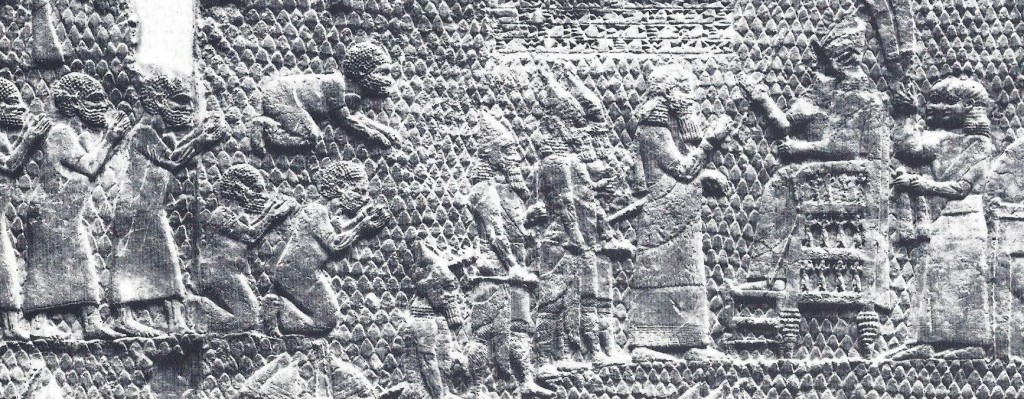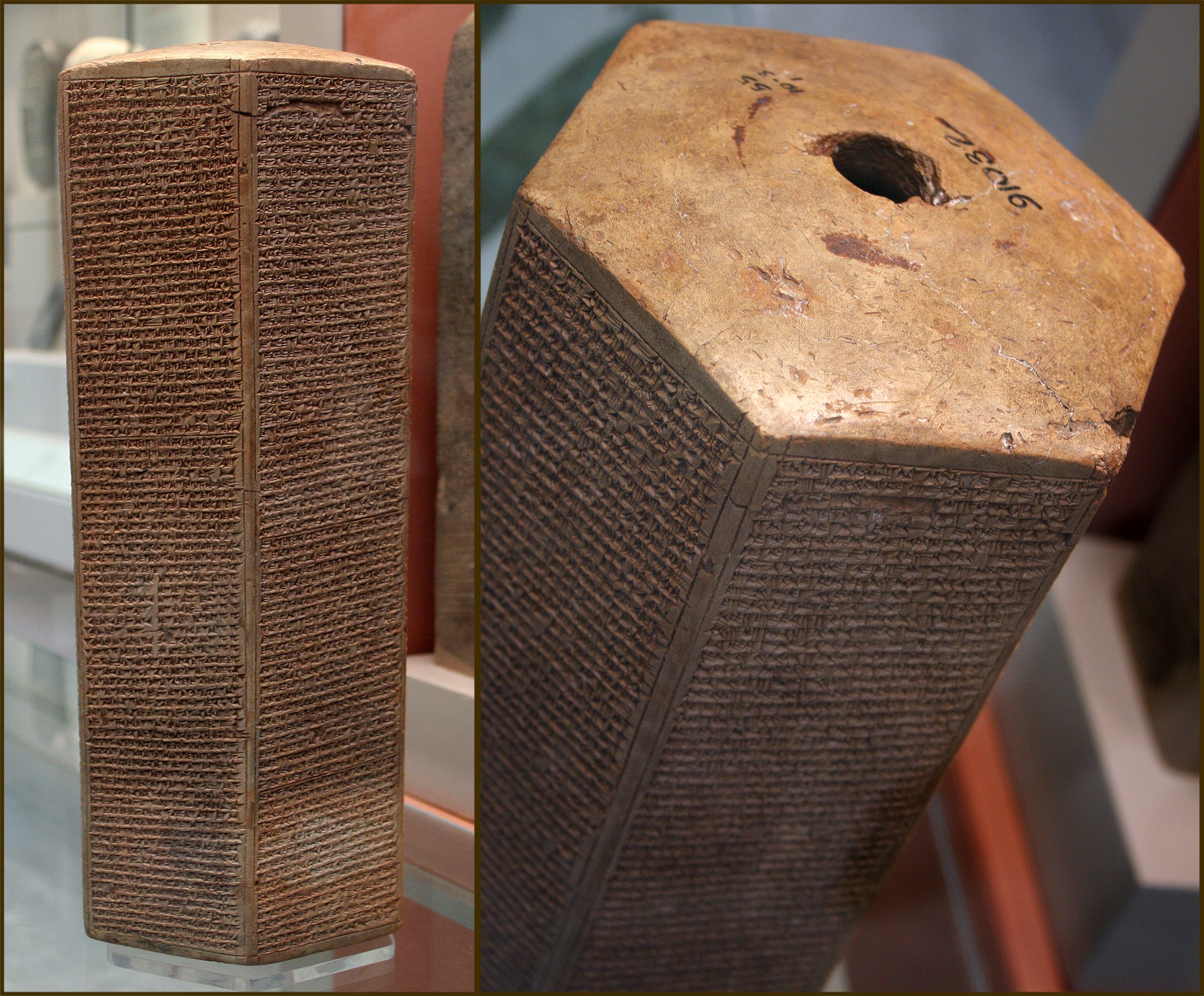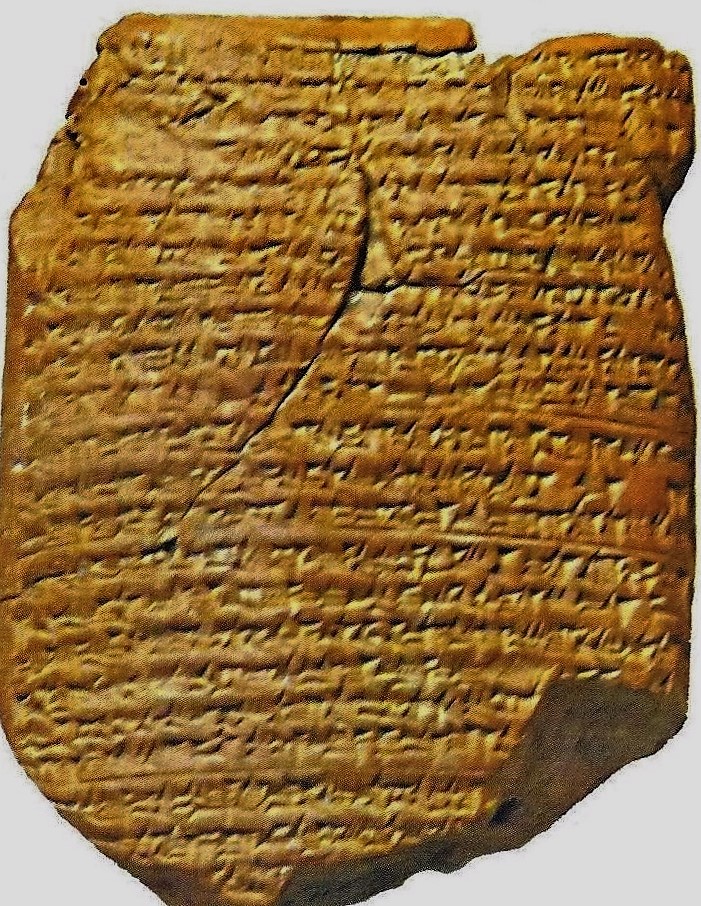03.02.04 733 B.C. Israel Falls to the Assyrians; Israelites Deported to the East; 723 B.C. Israel Ends[1]
Because of Israel’s (the ten northern tribes) idolatry, God permitted His people to suffer under pagan rulers and religions. The Assyrians (from modern Iraq), led by King Tiglath-Pileser III, became the international superpower and conquered Israel.[2] In 733 B.C. Israel was required not only to pay huge taxes, but in the decade of 732-722 the Assyrians deported many Israelites to the east in an attempt to destroy their culture. By 721 B.C. the ten northern tribes known as the Kingdom of Israel ended. Religious and civic leaders as well as craftsmen and merchants were deported to insure that the remaining poor did not have the wealth or skill to revolt.[3]
As to the so-called “ten lost northern tribes,” according to the 2 Esdras 13:40-45, they went to a region beyond the Euphrates River known as Arsareth, or Arzareth. This was in the upper Tigris-Euphrates River Valley.[4] Josephus said there were countless Jews who would return from there to their homeland in the last days.[5] Second Esdras, a/k/a 4 Ezra, states the following:
40 Those are the ten tribes, which were carried away prisoners out of their own land in the time of Osea the king, whom Salmanasar the king of Assyria led away captive, and he carried them over the waters, and so came they into another land. 41 But they took this counsel among themselves, that they would leave the multitude of the heathen, and go forth into a further country, where never mankind dwelt, 42 That they might there keep their statutes, which they never kept in their own land. 43 And they entered into Euphrates by the narrow places of the river. 44 For the most High then showed signs for them, and held still the flood, till they were passed over. 45 For through that country there was a great way to go, namely, of a year and a half: and the same region is called Arsareth. 46 Then dwelt they there until the latter time.
4 Ezra 13:40-46[6]
Some concluding thoughts are these: the problem is that no one today knows where Arsareth, or Arzareth, is located. What is known is that Anna, who saw the infant Jesus, was from the tribe of Asher – one of the so-called lost tribes. Yet when James wrote his letter, he addressed it to the twelve tribes in the dispersion (James 1:1-3). Finally, it appears that after the 722/21 destruction, the prophetic voice of God could be heard only in Judah; no longer in northern Israel.
Ancients believed that cultures could be destroyed by forcibly integrating people groups, which in turn would diminish the possibilities of a revolt.[7] So many people were deported that Galilee became a Gentile province for the next six centuries (2 Kgs. 15:29; Isa. 8:23), which is why Isaiah called the area the “Galilee of the Gentiles” (Isa. 9:1). Tiglath-Pileser’s son Shalmaneser V conquered Samaria in 723 B.C. (2 Kg. 17:1-6). His successor, Sargon II, reconquered the city in 720 B.C,[8] and deported 27,900 Israelites to the upper Tigris-Euphrates Valley and repopulated the Israelite area with Gentiles from that valley.[9]
In Sargon’s palace in Khorsabad, stone inscriptions commemorate his victory over Israel. One inscription found near his palace gate reads:
(Property of Sargon, etc. King of Assyria, etc.)
Conqueror of Samaria (Sa-mir-i-na) and of the entire
country of) Israel (Bit Hu-um-ri-a).
Sargon Pavement Inscription[10]
A second inscription was found inside his palace, which may have been part of Sargon II’s royal library. It reads:
I conquered and sacked the towns Shinuhtu (and) Samaria, and all Israel (Bit Hu-um-ri-ia).
Sargon Room XIV Inscription[11]
The Assyrians also imported other captured people from the east into Syria and northern Israel.[12] These people eventually intermarried with the few remaining Israelites and their descendants became known as the Samaritans. The account is recorded in Second Kings.
24 Then the king of Assyria brought people from Babylon, Cuthah, Avva, Hamath, and Sepharvaim and settled them in place of the Israelites in the cities of Samaria. The settlers took possession of Samaria and lived in its cities. 25 When they first lived there, they did not fear Yahweh. So the Lord sent lions among them, which killed some of them. 26 The settlers spoke to the king of Assyria, saying, “The nations that you have deported and placed in the cities of Samaria do not know the requirements of the God of the land. Therefore He has sent lions among them that are killing them because the people don’t know the requirements of the God of the land.”
27 Then the king of Assyria issued a command: “Send back one of the priests you deported. Have him go and live there so he can teach them the requirements of the God of the land.” 28 So one of the priests they had deported came and lived in Bethel, and he began to teach them how they should fear Yahweh.
29 But the people of each nation were still making their own gods in the cities where they lived and putting them in the shrines of the high places that the people of Samaria had made. 30 The men of Babylon made Succoth-benoth, the men of Cuth made Nergal, the men of Hamath made Ashima, 31 the Avvites made Nibhaz and Tartak, and the Sepharvites burned their children in the fire to Adrammelech and Anammelech, the gods of the Sepharvaim. 32 They feared the Lord, but they also appointed from their number priests to serve them in the shrines of the high places. 33 They feared the Lord, but they also worshiped their own gods according to the custom of the nations where they had been deported from.
2 Kings 17:24-33
The ancients believed that each area of land was controlled by a territorial spirit or god. In this case, since the people of Samaria were dying, the Assyrians said that an Israelite priest of that land ought to return home and tell the new immigrants, who had five gods in their homelands, how to worship the existing God of the land. It is ironic the pagan Assyrians would send an Israelite priest to tell the new residents and remaining poor Israelites how the God of Abraham, Isaac, and Jacob should be worshiped. However, the new residents refused to listen to the priest and continued to worship their own pagan deities (v. 29).[13]
This historical background of the Samaritans is critical to understanding the cultural environment in which Jesus ministered, especially when in or near Samaria. As was previously mentioned, the Samaritans were an ethnically mixed group; offspring of intermarriage between the ten northern Israelite tribes and the five pagan tribes (each tribe with its own gods)[14] that were relocated into northern Israel by the Assyrians. When Jesus met the woman at the well (Jn. 4) she symbolized her people. She had a marriage covenant with five husbands just as her people (from five tribes) had at one time been in a spiritual covenant with their gods (2 Kg. 17:30-31).
By the first century there was intense hatred and rivalry between the Samaritans and Jews. The Samaritan faith was, and still is, a form of basic Judaism with several notable similarities and differences.[15] Differences and anger grew over the centuries, and by the first century each group considered the other sacrilegious, impure, unholy, and detestable. Into this hateful, explosive, and hostile environment Jesus came to bring the Kingdom of God.
Finally, the reputation of the Assyrians, and especially that of Tiglath-Pileser III, as being extremely cruel to his captives was remembered for centuries. He and his successors brought unimaginable suffering, death, and destruction to Phoenicia and Israel – especially to the tribal areas of Zebulun and Naphtali. Yet these horrific actions were not forgotten by God; some seven centuries later Jesus retraced the route of Tiglath-Pileser III[16] and taught the Kingdom of God, demonstrated His power by the performance of miracles, and brought life and hope to the descendants of those who suffered in the past.[17]
[1]. For centuries scholars have been unable to reconcile the so-called biblical errors concerning the dates of reign of various kings. Many saw this as clear evidence for the unreliability of the Bible and concluded that it was written for a theological point and is historically inaccurate. Then, in the early 1950s, E. R. Thiele discovered that Judah used the Jewish calendar while northern Israel, under the influence of the Assyrians, naturally used the Assyrian calendar. For further study, see E. R. Thiele, The Mysterious Numbers of the Hebrew Kings. Grand Rapids: Zondervan, 1983.
[2]. An excellent resource for further study is Rainey and Notley. The Sacred Bridge: Carta’s Atlas of the Biblical World. 229-33.
[3]. Malamat, “Caught Between the Great Powers.” 34.
[4]. Levy, The Ruin and Restoration of Israel. 21.
[5]. Josephus, Antiquities 11.5.2.
[6]. Scholars debate on the classification of 3rd Ezra (a/k/a 1 Esdras) and 4th Ezra (a/k/a 2nd Esdras). Sometimes these are listed in the Apocrypha (see 02.02.03) and other times they are listed in the Pseudepigrapha (see 02.02.24). The reader is reminded that quotations from non-biblical sources are not to be understood as being of equal authority with the biblical narratives. See 01.02.04.
[7]. Golub, In the Days. 10-12.
[8]. The Assyrian kings Tiglath-Pileser II, Shalmaneser V, Sargon II, Sennacherib, Adrammelech and Esarhaddon, are among fifty biblical names whose existence has been verified by archaeological studies in a published article by Lawrence Mykytiuk titled, “Archaeology Confirms 50 Real People in the Bible.” Biblical Archaeology Review. March/April, 2014 (40:2), pages 42-50, 68. This archaeological evidence confirms the historical accuracy of the biblical timeline. For further study, see the website for Associates for Biblical Research, as well as Grisanti, “Recent Archaeological Discoveries that Lend Credence to the Historicity of the Scriptures.” 475-98.
[9]. Levy, The Ruin and Restoration of Israel. 21.
[10]. Pritchard, Ancient Near East Texts, 284; Lewis, Historical Backgrounds of Bible History. 40.
[11]. Pritchard, Ancient Near East Texts, 285; The transliterated name of Bit Hu-um-ri-ia literally means “House of Omri,” a king of Israel after the monarchy divided. Under his guidance the country became an economic power, and as a result, the other nations referred to Israel as “The Land or The House of Omri,” for more than a century after his death; See also Jack Lewis, Historical Backgrounds of Bible History. 40; King Omri is among fifty biblical names whose existence has been verified by archaeological studies in a published article by Lawrence Mykytiuk titled, “Archaeology Confirms 50 Real People in the Bible.” Biblical Archaeology Review. March/April, 2014 (40:2), pages 42-50, 68. This archaeological evidence confirms the historical accuracy of the biblical timeline. For further study, see the website for Associates for Biblical Research, as well as Grisanti, “Recent Archaeological Discoveries that Lend Credence to the Historicity of the Scriptures.” 475-98.
[12]. Kelso, “Samaria, Territory of.” 5:242.
[13]. New International Version Study Bible footnote for 2 Kings 17:29.
[14]. Geikie, The Life and Words of Christ. 1:522.
[15]. See 02.01.17 “Samaritans.”
[16]. See 10.01.23.Q1 “Why did Jesus go to the regions of Tyre and Sidon and later to the Decapolis cities (Mt. 15:22-28; Mk. 7:24-26)?”
[17] Franz. “Jesus at Hazor.” http://www.lifeandland.org/2010/10/jesus-at-hazor/ Retrieved October 5, 2015.


 03.02.05.B. SENNACHERIB’S RECORD OF HIS SIEGE AGAINST JERUSALEM. The Assyrian king had his siege against King Hezekiah recorded on three clay prisms, known today as the Taylor Prism (shown above) and two Sennacherib Prisms. Other records include writings by Herodotus and Isaiah 36-37; 2 Kings 18 and 2 Chronicles 32. Photo by David Castor/Wikipedia Commons.
03.02.05.B. SENNACHERIB’S RECORD OF HIS SIEGE AGAINST JERUSALEM. The Assyrian king had his siege against King Hezekiah recorded on three clay prisms, known today as the Taylor Prism (shown above) and two Sennacherib Prisms. Other records include writings by Herodotus and Isaiah 36-37; 2 Kings 18 and 2 Chronicles 32. Photo by David Castor/Wikipedia Commons.